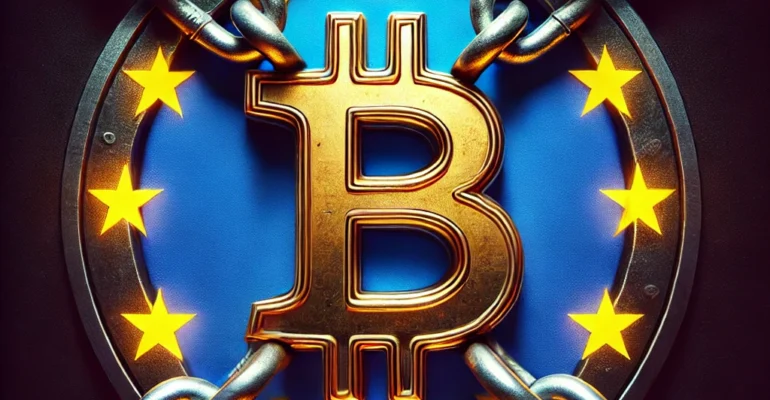Crypto in Chains: How Europe’s MICA Regulation Stifles Innovation and Freedom
Crypto in Chains: How Europe’s MICA Regulation Stifles Innovation and Freedom
As cryptocurrencies become increasingly mainstream, governments worldwide are racing to regulate this disruptive technology. But while some regulation can bring clarity and confidence to the market, others threaten to stifle the very essence of what crypto stands for: decentralization, innovation, and financial freedom. Europe’s Markets in Crypto-Assets (MICA) regulation, hailed by its proponents as a step toward a safer and more predictable crypto environment, is, in reality, a heavy-handed approach that risks suffocating innovation in the name of control.
The Promise of Crypto: Freedom from Centralization
Cryptocurrencies were born out of a desire to create a financial system free from centralized control, offering individuals more autonomy over their money and data. By cutting out middlemen like banks and governments, blockchain technology enables faster, cheaper, and more secure transactions. But with the rise of crypto has come increasing scrutiny from regulators who are concerned about risks like fraud, money laundering, and market manipulation.
While these are valid concerns, regulation must strike a balance between fostering innovation and protecting users. Unfortunately, Europe’s MICA regulation tips the scale in the wrong direction.
What is MICA, and What Does It Mean for Crypto?
The Markets in Crypto-Assets (MICA) regulation, set to take effect in 2024, is Europe’s attempt to create a unified legal framework for cryptocurrency. On the surface, it aims to standardize rules across the EU, protect consumers, and prevent financial crimes. However, the fine print reveals a deeply intrusive approach.
Key provisions of MICA include:
- Licensing Requirements: Crypto platforms, wallet providers, and issuers must obtain licenses to operate in the EU.
- Stablecoin Oversight: Issuers of stablecoins face strict reserve requirements and must adhere to operational caps.
- Data Disclosure: Projects must disclose detailed whitepapers, including technical specifications and risk assessments.
While these measures may seem reasonable, they create significant barriers for smaller players and startups. Licensing and compliance costs can easily overwhelm young projects, driving innovation out of Europe. Moreover, the extensive data disclosure requirements undermine the pseudonymity that attracts many to the crypto space.
The Real Impact of MICA: Intrusion Over Innovation
MICA’s one-size-fits-all approach threatens to turn Europe into a crypto backwater. Here’s why:
- Barrier to Entry: Startups and grassroots projects—often the lifeblood of innovation—will struggle to meet MICA’s demanding compliance standards. This will lead to the consolidation of the industry around a few big players, diminishing diversity and competition.
- Stifled Innovation: Regulatory uncertainty is already causing developers to flee Europe for more crypto-friendly jurisdictions. MICA could accelerate this brain drain.
- Erosion of Privacy: By forcing disclosure of technical and operational details, MICA undermines one of crypto’s core principles: user autonomy and privacy.
A Better Way Forward
Instead of imposing sweeping regulations, policymakers should focus on fostering a collaborative environment with the crypto community. Proportional regulation—tailored to specific risks and designed to encourage growth—can protect consumers without crippling innovation.
Conclusion: Crypto Needs Freedom to Thrive
Europe’s MICA regulation may appear to bring order to the crypto space, but it comes at a high cost. By prioritizing control over creativity, MICA risks driving innovation away from the region and alienating the very individuals it seeks to protect. If regulators truly want to support the crypto revolution, they need to embrace its core values of decentralization and autonomy—not crush them under the weight of bureaucracy.
For a deeper dive into how regulations like MICA impact the crypto space—and how you can navigate these challenges—check out this book, Crypto Revolution Handbook. It’s your ultimate guide to thriving in the ever-changing world of digital currencies.
Crypto was born to empower, not to conform. Will Europe remember this before it’s too late?




